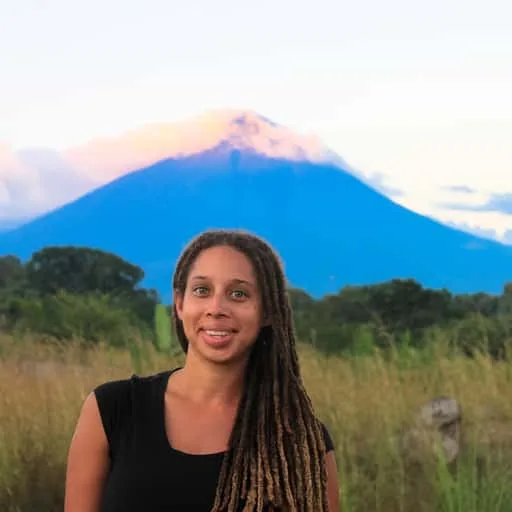Key takeaways
- Travel insurance for trekking offers protection for people with a special taste for adventure.
- Trekking travel insurance can come with helicopter rescue so you can be evacuated or taken to the nearest medical facility – potentially saving you from extremely high costs.
- A range of insurers offer the specs you need, with altitude limits from 2,000 metres or more. But trips to Mt Everest in Nepal are often excluded by policies.
Compare trekking travel insurance
It's really important to understand that while many insurers will cover trekking, you'll want to pay close attention to any restrictions or exclusions.
| Brand | Altitude limit | Must use a licensed operator? | Other conditions | Apply |
|---|---|---|---|---|
| 6,000m | No | Cover for trekking is available under Adventure boost option and if specialist equipment is not required. | Bonus | |
| 3,000m | No | Does not cover trekking on the Kokoda trail. | Finder Award | |
 Fast Cover Fast Cover | 3,000m | No | Cover is included if specialist equipment is not required. | Bonus |
 Insure4less Insure4less | 4,000m | No | Does not cover any trekking in Nepal | Get quote |
 Travel Insuranz Travel Insuranz | 4,000m | No | Does not cover any trekking in Nepal | Get quote |
| 5,000m | Yes (between 3,000 and 5,000m) | Only covers treks that are available to the general public and do not require special fitness levels or skills | Get quote | |
| 5,000m | Yes (between 3,000 and 5,000m) | Trekking up to 3000m is covered with a standard excess, but if you trek between 3000 - 5000m an extra $250 excess is applied on top of the standard excess if you make a claim. | Finder AwardBonus | |
 World2cover World2cover | 3,000m | No | N/A | Get quote |
 Cover-More Cover-More | 3,000m | No | Cover is included if specialist equipment is not required. | Bonus |
| 3,000m | N/A | N/A | ||
 Travel with Kit Travel with Kit | 5,000m | No | Cover is included if specialist equipment is not required. | Get quote |
 Travel with Jane Travel with Jane | 5,000m | No | Cover is included if specialist equipment is not required. | |
 1cover 1cover | 3,500m | N/A | N/A | More info |
 World Care World Care | 3,000m | No | Does not cover trekking on the Kokoda trail |
* Insurers will each have different limitations around mountaineering, climbing and/or abseiling activities that require specialised equipment like support ropes. This table was last updated July 2022
Ready to get a travel insurance quote?
Now that you've compared brands, pop in your trip details to get a quote.
What does travel insurance for trekking cover?
Trekking insurance covers many of the same situations as standard travel insurance, along with added protection for adventure-related activities:

You get injured on the trail
You'll be covered for any medical and/or hospital treatment you need, up to any stated limit as outlined in your travel policy.

You need to be evacuated via helicopter
Trekking travel insurance with helicopter rescue means that if you desperately need to get to a hospital, and there's no other way to get you there, your helicopter rescue will be covered.

Your equipment gets lost or stolen
Trekking travel insurance policies will usually offer added protection for expensive gear that gets stolen or is lost, for example, by your airline.

Your trip gets cancelled
If you're forced to cancel your trek for unexpected reasons like bad weather, if it's listed as a claimable event it can cover the cost of trip expenses.
Are there any limits to what trekking and hiking insurance will cover?
Adventurous doesn't mean reckless, so each insurer will have a different set of conditions you must follow if you want your claims to succeed. Here are some of the most common conditions you'll find:
- You may only be covered to a specific altitude limit. Many trekking policies have no altitude limits, but some will limit you to a specific altitude like 4,000m or 6,000m.
- You may only be covered if you go through a licensed operator. Some brands will only insure your trek if it's organised by a licensed commercial operator.
- You may not be covered if your trek requires specialised equipment. Most policies only cover basic trekking or hiking holidays, not mountaineering. If you need support ropes or abseiling gear, you probably won't be covered.
- You may have to disclose your plans. Some policies will require you to describe your plans before they'll sell you a policy.
- You have to take reasonable care. Almost every policy will contain language saying you won't be covered if you act negligently, and some trekking policies (especially ones with no altitude limits) will make this particularly clear – keep a close eye on your policy wording.
- You may have to buy an insurance add-on. Some insurers offer trekking cover as an add-on to their normal travel insurance policies. If you go through one of these, you'll need to buy the travel insurance policy and add trekking cover on top of that.

"You should be covered while trekking with most travel insurance, but watch the number of drinks you consume while camping. Alcohol can invalidate your claim if you have an accident."
How does hiking insurance cover helicopter rescue?
As a trekker, you'll often find yourself in inaccessible locations under often treacherous conditions. This makes helicopter rescue cover one of the most important features of trekkers and hikers insurance, and it's why every insurer offers it.
Your insurer will likely place some conditions around helicopter evacuation, so it pays to understand these before you go so you're not caught off-guard by a denied claim.
Here are the two conditions most insurers apply to helicopter rescue:
- It must be medically necessary. This means a licensed medical professional or licensed tour guide must determine that the rescue is the only way you can get the treatment you need.
- You must alert your insurer about your need for rescue. They will have medical assistance teams that can help organise the evacuation and guarantee payment with the hospital and medics.
Are you covered if you get lost?
We have identified two insurers that offer search and rescue cover: Insure4Less and Travel Insuranz. However, most insurers consider search and rescue to be a different beast from medical evacuation, where your location is known. This means that you will pay out of your own pocket for any search and rescue operation that's launched on your behalf.
The best way to avoid this situation is to organise your trek through a licensed tour operator. They may be liable for damages if it's their fault you get lost. Plus, they will have the means and expertise to conduct a search and rescue operation if it's needed.
Will you pay more for trekking cover?
On average, trekking insurance will be slightly more expensive than normal travel insurance but not all insurers work out their prices in the same way. For example, if you have a policy with Travel Insurance Direct you are automatically covered for trekking with the cost of specialised cover factored in.
On the other hand, if you take out a policy with World Nomads then you're only covered for treks up to 2,000m in altitude. For treks over this height, you will need to upgrade your plan and pay an additional premium on top of what you're paying for the normal policy.
At the end of the day, it's up to you to find or build a few policies that cover you for what you need them to and then compare whatever the final costs turn out to be.
Tips for staying safe when trekking overseas
- Get familiar with your equipment. Learn how to use your equipment before setting off on your trip, especially maps and GPS units.
- Plan your course. Selecting a trekking course starts with being realistic about your fitness levels, safety and accessibility in case of an emergency. If you're considering a course overseas, it might be a good idea to join a group tour. Group operators always insist that your policy makes provision for medical emergencies and evacuation.
- Check the weather. Be sure to check the weather forecast for the dates and location you're planning to visit.
- Find a guide. A guide will accommodate your pace and most likely will know the ins and outs of the trail.
- Know your limits. Go at your own pace, and don't be afraid to take a rest. Fatigue on tricky walking surfaces can easily result in injuries.
- Pack light (where possible). Take only the important essentials and you'll save yourself some of the hard graft.
What to do if you injure yourself on your hike
Here's what to do if you find yourself in a medical emergency overseas.
- Contact your insurer. You must let your insurer know as soon as possible. A good policy will provide for immediate assistance in a medical emergency and arrange for hospital expenses to be covered. You'll also have to download, complete and send a claims form to the insurer, along with all the required documentation.
- Provide supporting information to make the claim. You'll be asked to provide information to help the insurer better process your claim. This can include medical and police reports, statements from travel providers, original receipts and proof of ownership. Foreign-language documents must be translated into English.
- Be accurate. Be as honest and forthcoming as possible when providing information and evidence.
Frequently asked questions
Ask a question
4 Responses
More guides on Finder
-
Golf travel insurance
Whilst playing golf on your trip imposes a small risk of injury, there is still a risk of having your equipment stolen. Make sure you are covered ahead of your next with an appropriate Golf Insurance policy.
-
Travel insurance for shark cage diving
Find out how travel insurance covers shark cage diving and who
-
Bungee jumping travel insurance
A guide to finding travel insurance brands that cover bungee jumping and what is covered.
-
Travel insurance for skydiving
Find out which travel insurance brands provide cover for Skydiving.
-
Travel insurance for paragliding and parasailing
Planning to paraglide or parasail? Make sure your travel insurance policy covers you.
-
Mountain bike travel insurance
Guide to finding travel insurance that covers mountain biking.
-
Scuba diving travel insurance
Find out whether or not travel insurance covers you for scuba diving.
-
Motorcycle travel insurance
This guide takes a closer look at motorcycle travel insurance and makes some suggestions regarding levels of cover and ways to stay safe when riding abroad.


Does QBE insurance cover trekking to Everest Base Camp (no ropes or mountaineering equipment
Hello Joolian,
Thank you for your query.
While most policies do automatically include trekking and hiking, it’s a good idea to double-check with your policy provider before planning a trek overseas. You would also need to inform your insurer and ask them directly about cover if no ropes or equipment is used.
If you would like, you may also review your options from our
Travel Insurance for Nepal and Everest Base Camp page.
Hope this helps.
Cheers,
Gru
Good Evening,
I will be doing the Three Capes Track in Tasmania in August – it is a 4 day/3night hike.
What type of travel insurance will I need and how much will it cost?
Thank you Caroline
Hi Caroline,
Thanks for your question.
To compare costs for travel insurance policies, please enter your travel details into the quote comparison tool on the domestic travel insurance page.
I hope this was helpful,
Richard